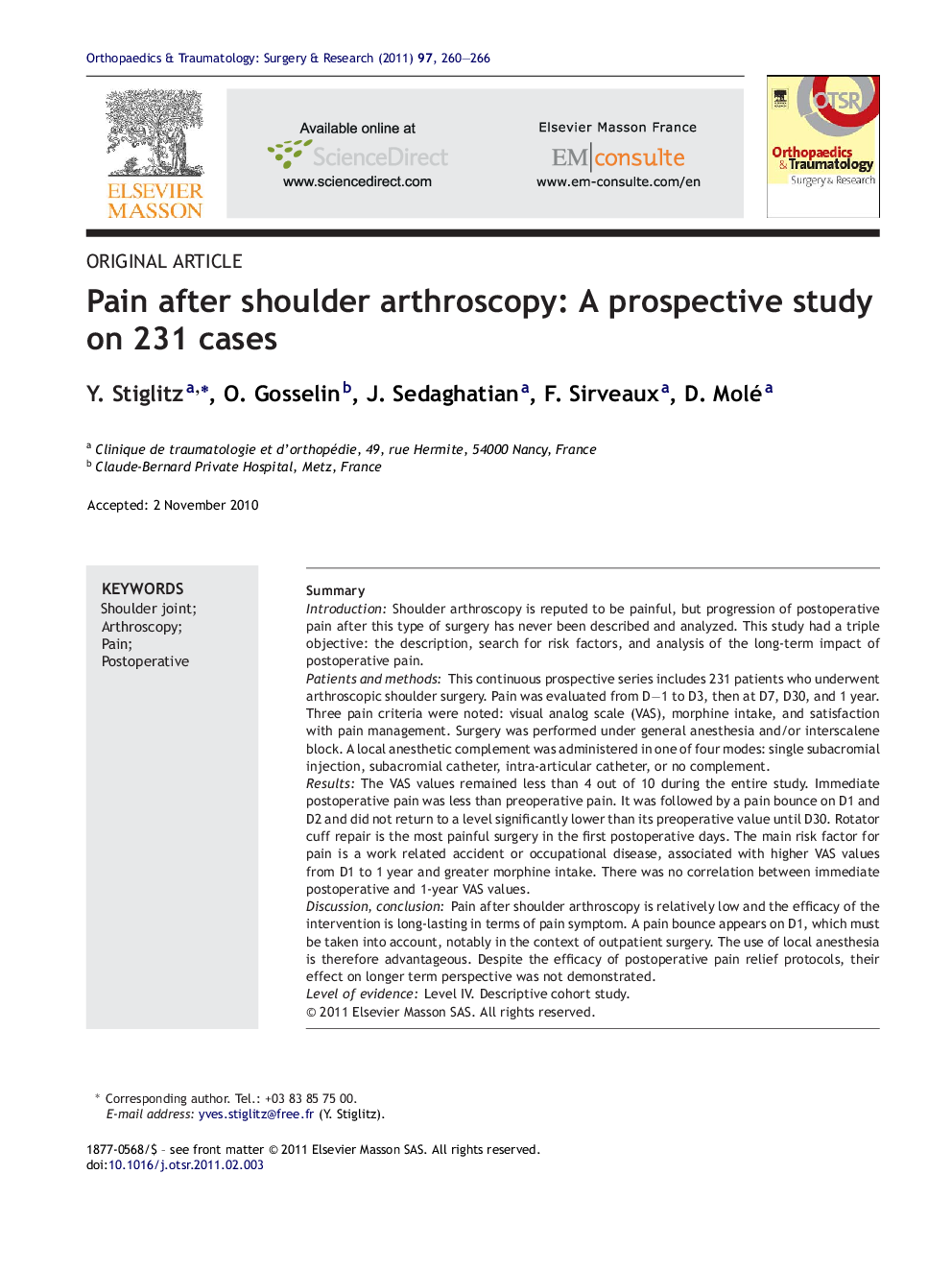| Article ID | Journal | Published Year | Pages | File Type |
|---|---|---|---|---|
| 4082263 | Orthopaedics & Traumatology: Surgery & Research | 2011 | 7 Pages |
SummaryIntroductionShoulder arthroscopy is reputed to be painful, but progression of postoperative pain after this type of surgery has never been described and analyzed. This study had a triple objective: the description, search for risk factors, and analysis of the long-term impact of postoperative pain.Patients and methodsThis continuous prospective series includes 231 patients who underwent arthroscopic shoulder surgery. Pain was evaluated from D−1 to D3, then at D7, D30, and 1 year. Three pain criteria were noted: visual analog scale (VAS), morphine intake, and satisfaction with pain management. Surgery was performed under general anesthesia and/or interscalene block. A local anesthetic complement was administered in one of four modes: single subacromial injection, subacromial catheter, intra-articular catheter, or no complement.ResultsThe VAS values remained less than 4 out of 10 during the entire study. Immediate postoperative pain was less than preoperative pain. It was followed by a pain bounce on D1 and D2 and did not return to a level significantly lower than its preoperative value until D30. Rotator cuff repair is the most painful surgery in the first postoperative days. The main risk factor for pain is a work related accident or occupational disease, associated with higher VAS values from D1 to 1 year and greater morphine intake. There was no correlation between immediate postoperative and 1-year VAS values.Discussion, conclusionPain after shoulder arthroscopy is relatively low and the efficacy of the intervention is long-lasting in terms of pain symptom. A pain bounce appears on D1, which must be taken into account, notably in the context of outpatient surgery. The use of local anesthesia is therefore advantageous. Despite the efficacy of postoperative pain relief protocols, their effect on longer term perspective was not demonstrated.Level of evidenceLevel IV. Descriptive cohort study.
